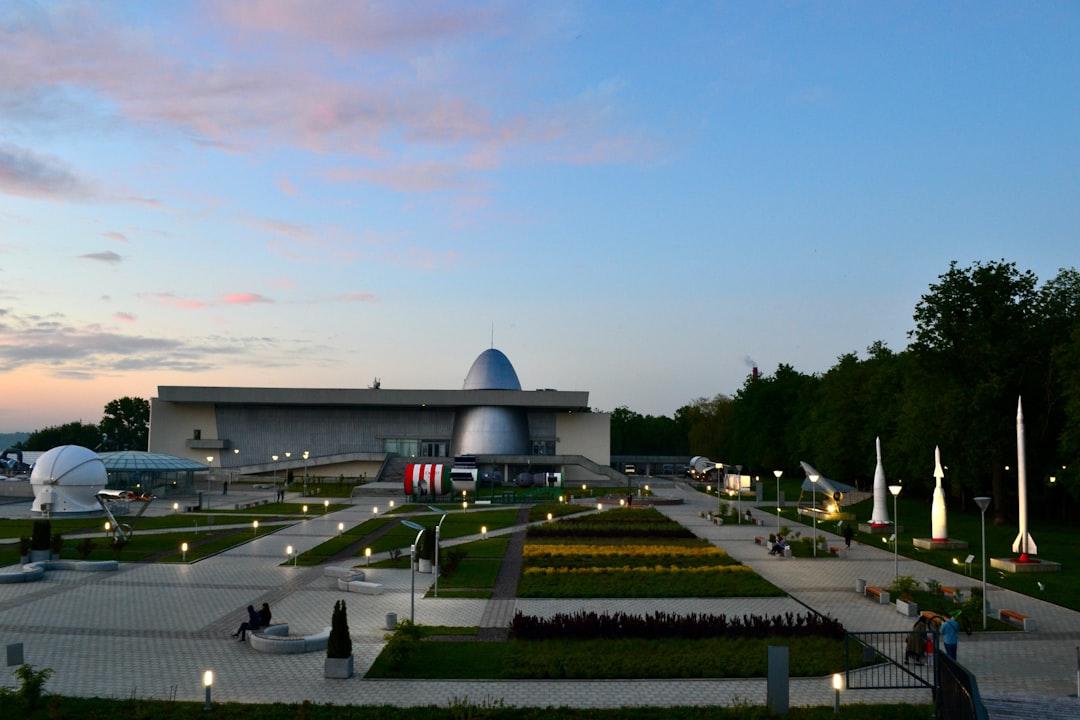The journey of space launch technology has been a remarkable saga of human ingenuity and ambition. From the early days of rocketry, when pioneers like Konstantin Tsiolkovsky and Robert Goddard laid the theoretical groundwork, to the monumental achievements of the Apollo program, the evolution of this field has been marked by significant milestones. The first successful launch of a human-made object into space, the Soviet Union’s Sputnik 1 in 1957, heralded a new era in which nations began to compete for dominance in space exploration.
This event not only ignited the space race but also showcased the potential of launch technology to transcend earthly boundaries. As decades passed, advancements in materials science, computer technology, and engineering practices propelled space launch capabilities to new heights. The development of multi-stage rockets allowed for heavier payloads to be sent into orbit, while innovations in guidance systems improved accuracy and reliability.
The introduction of reusable launch systems, such as NASA’s Space Shuttle, marked a significant turning point, reducing costs and increasing the frequency of launches. This evolution has paved the way for a more accessible and sustainable approach to space exploration, setting the stage for the next generation of space endeavors.
The Rise of Commercial Space Launch Companies
The Democratization of Space Access
The rise of commercial space companies has democratized access to space, enabling smaller organizations and universities to participate in missions that were once the exclusive domain of national governments. This has opened up new opportunities for collaboration and innovation in the aerospace sector.
Investment and Advancements in Launch Technologies
The influx of capital from venture capitalists and private investors has fueled rapid advancements in rocket design, manufacturing processes, and launch logistics. This has led to the development of new launch technologies and services, driving competition and innovation in the industry.
This ultimately benefits all stakeholders involved in space exploration, from governments to private companies, and paves the way for further advancements in the field.
The Role of Government Agencies in Space Launch

Despite the growing influence of commercial companies, government agencies continue to play a crucial role in the realm of space launch. Organizations such as NASA, the European Space Agency (ESA), and the Indian Space Research Organisation (ISRO) remain at the forefront of scientific research and exploration initiatives. These agencies often provide foundational support through funding, infrastructure, and expertise that are essential for ambitious projects.
Their long-standing experience in space missions allows them to undertake complex endeavors that require significant resources and coordination. Moreover, government agencies often collaborate with private companies to leverage their strengths and capabilities. Public-private partnerships have become increasingly common, allowing for shared risks and rewards in developing new technologies.
For instance, NASA’s Commercial Crew Program has successfully partnered with SpaceX and Boeing to transport astronauts to the International Space Station (ISS). Such collaborations not only enhance mission success rates but also stimulate innovation within the commercial sector, creating a symbiotic relationship that benefits both parties.
Advancements in Rocket Propulsion Systems
| Advancement | Description | Impact |
|---|---|---|
| Increased Efficiency | New designs and materials have improved fuel efficiency, reducing costs and environmental impact. | Lower operational costs and reduced emissions. |
| Reusable Components | Development of reusable rocket components has led to significant cost savings in space exploration. | Lower cost per launch and increased accessibility to space. |
| Advanced Propulsion Systems | New propulsion technologies, such as ion and plasma engines, are enabling faster and more efficient space travel. | Reduced travel time and increased payload capacity. |
| Improved Reliability | Advancements in materials and manufacturing processes have increased the reliability of rocket propulsion systems. | Enhanced safety and reduced mission failure rates. |
The heart of any space launch lies in its propulsion system, which has seen remarkable advancements over the years. Traditional chemical propulsion systems have been the backbone of rocket technology since its inception; however, recent developments have introduced new paradigms that promise greater efficiency and performance. Innovations such as reusable rocket engines have significantly reduced costs while maintaining reliability.
SpaceX’s Merlin engines exemplify this trend, showcasing how reusability can transform economic models in space travel. In addition to chemical propulsion, alternative technologies are gaining traction. Electric propulsion systems, such as ion thrusters, offer higher efficiency for long-duration missions by utilizing electricity to accelerate ions for thrust.
These systems are particularly advantageous for deep-space exploration where fuel efficiency is paramount. As research continues into advanced propulsion methods like nuclear thermal propulsion and solar sails, the potential for faster and more sustainable travel through space becomes increasingly feasible.
The Potential for Space Tourism
The concept of space tourism has transitioned from science fiction to a tangible reality in recent years. With advancements in launch technology and a growing interest from affluent individuals seeking unique experiences, companies like Virgin Galactic and Blue Origin are pioneering commercial suborbital flights. These ventures aim to provide paying customers with a brief taste of weightlessness and stunning views of Earth from above, marking a significant milestone in making space accessible to non-professionals.
However, the potential for space tourism extends beyond mere recreational flights. As this industry matures, it could pave the way for more ambitious projects such as orbital hotels or even lunar vacations. The economic implications are vast; a thriving space tourism sector could generate substantial revenue while fostering public interest in space exploration.
As safety measures improve and costs decrease over time, it is likely that more people will have the opportunity to experience the wonders of space firsthand.
The Impact of Space Launch on Scientific Research

Earth Observation and Monitoring
Instruments on board these satellites gather vast amounts of information that scientists analyze to better understand Earth’s systems and predict future changes.
Exploring the Cosmos
Missions to other celestial bodies, such as Mars rovers or lunar landers, provide invaluable insights into planetary geology and astrobiology. The International Space Station (ISS) serves as a unique laboratory for conducting experiments in microgravity that would be impossible on Earth.
Breakthroughs and Collaborations
Research conducted aboard the ISS has led to breakthroughs in medicine, materials science, and fundamental physics. As more nations and private entities engage in space research initiatives, the collaborative nature of these efforts will likely yield even greater scientific advancements that benefit humanity as a whole.
Challenges and Risks in Space Launch
Despite the remarkable progress made in space launch technology, numerous challenges and risks persist. The complexity of rocket design and engineering means that even minor failures can lead to catastrophic outcomes. Historical incidents such as the Challenger and Columbia disasters serve as stark reminders of the inherent dangers associated with human spaceflight.
Ensuring safety remains paramount as both government agencies and commercial companies strive to minimize risks through rigorous testing and quality assurance protocols. Additionally, the increasing frequency of launches raises concerns about space debris—a growing problem that threatens both operational satellites and future missions. As more objects populate Earth’s orbit, collisions become more likely, necessitating international cooperation to develop effective debris mitigation strategies.
Balancing the excitement of expanding access to space with responsible stewardship is crucial for ensuring sustainable exploration for generations to come.
The Future of Space Launch: Innovations and Opportunities
Looking ahead, the future of space launch technology is brimming with possibilities driven by innovation and collaboration. Emerging technologies such as 3D printing are revolutionizing rocket manufacturing processes, enabling rapid prototyping and reducing costs significantly. Furthermore, advancements in artificial intelligence are enhancing mission planning and execution by optimizing trajectories and improving decision-making during launches.
As humanity’s aspirations extend beyond Earth—toward Mars colonization or asteroid mining—the demand for reliable and efficient launch systems will only grow.
By fostering an environment where collaboration thrives, stakeholders can unlock new frontiers in space travel that were once thought unattainable.
In conclusion, the evolution of space launch technology reflects humanity’s relentless pursuit of knowledge and exploration beyond our planet. As commercial companies rise alongside government agencies, advancements in propulsion systems pave the way for exciting prospects like space tourism and scientific research. While challenges remain, the future holds immense potential for innovation that will shape humanity’s journey into the cosmos for years to come.
SpaceX recently made history with the successful launch of their Crew Dragon spacecraft, marking the first time a commercially built spacecraft has carried astronauts to the International Space Station. This achievement highlights the advancements in space technology and the growing importance of private companies in space exploration. For more information on the safety precautions and equipment used in extreme weather situations, check out this article on storm chasing equipment and safety tips.

